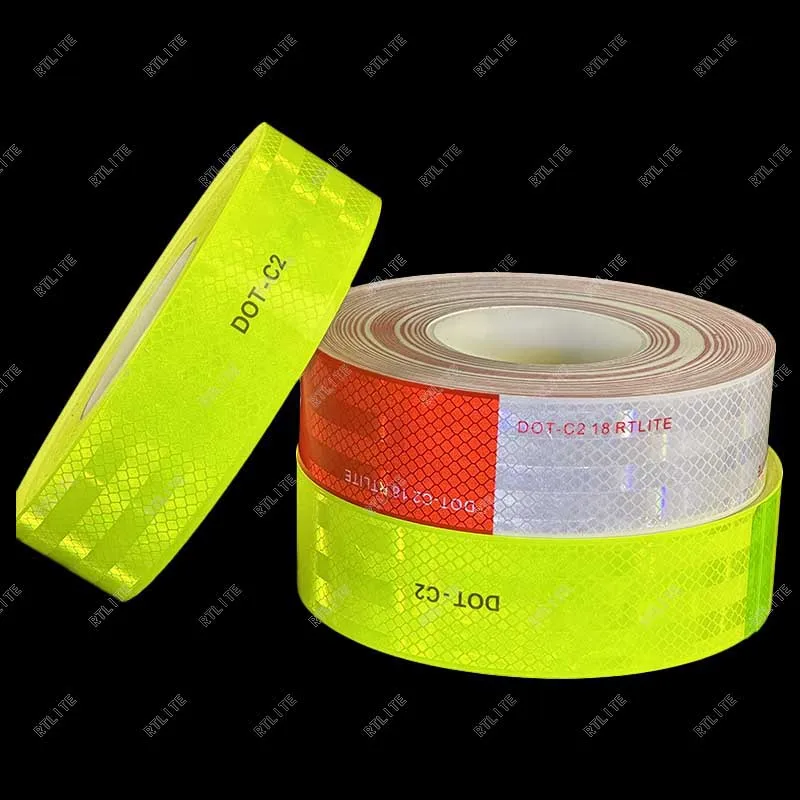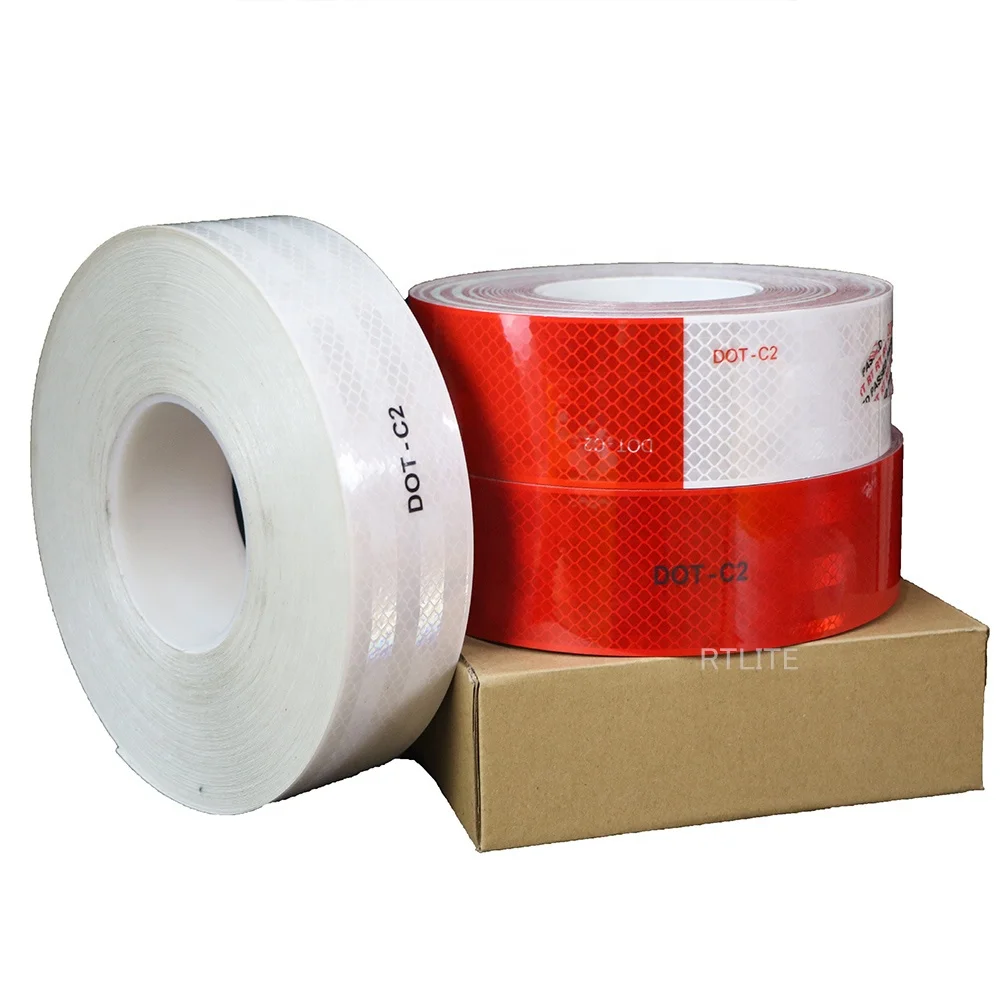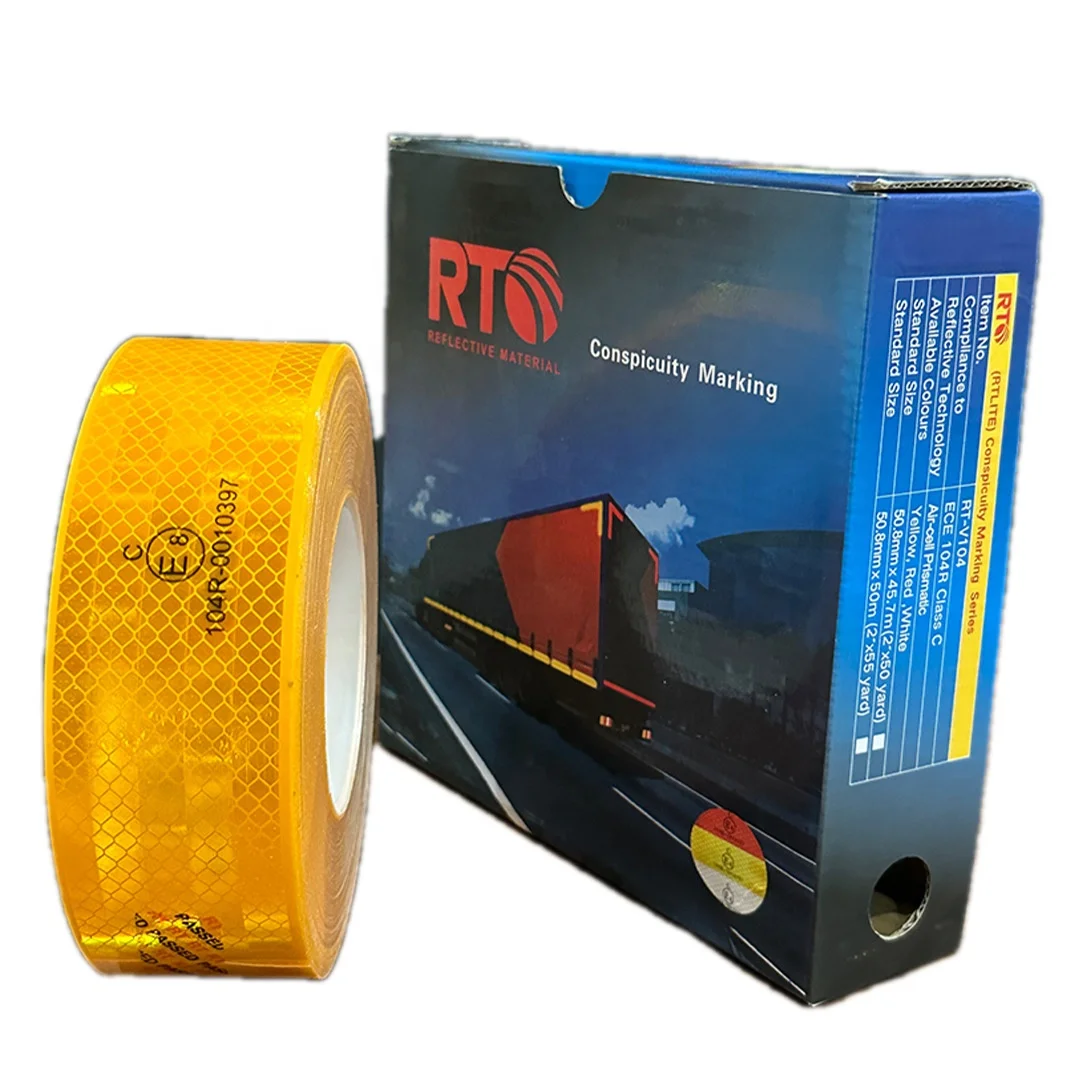Enhancing Road Safety: Innovative Approaches to Vehicle Conspicuity
Understanding Vehicle Conspicuity and Its Role in Accident Prevention
Sensory vs. Cognitive Conspicuity: Key Differences
Sensory conspicuity refers to the physical attributes of an object that make it visually noticeable to observers, such as color and brightness. This means features like glow in the dark reflective tape and anti-slip tape are designed to stand out in various lighting conditions, improving visibility for drivers and pedestrians. On the other hand, cognitive conspicuity relies on the observer's awareness and cognitive processing, which is essentially how quickly and effectively they recognize and understand the visual cues. Research shows that enhancing sensory conspicuity can lead to quicker reaction times in drivers, with studies indicating up to a 30% reduction in response time. This combination of sensory and cognitive aspects is crucial for designing safer vehicles and road environments. By focusing on both visibility and awareness, automotive designers can significantly improve safety measures and potentially save lives.
Impact on Multi-Vehicle Collision Rates
The impact of vehicle conspicuity on reducing multi-vehicle collisions is significant. Data shows that vehicles equipped with high visibility features can dramatically lower the risk of accidents. For example, a study found that enhancing vehicle visibility can reduce collision rates by approximately 15-25%. Specific cases, such as the incorporation of reflector tape, have demonstrated that improved visibility can prevent potential collisions, especially in low-light scenarios. Environmental factors, like adverse weather conditions, further compound the challenges of maintaining visibility. Studies highlight that poor weather can increase the risk of accidents by reducing visibility, reinforcing the importance of conspicuity measures. For vehicle manufacturers and urban planners, this data emphasizes the need for enhanced vehicle designs and road safety infrastructure that consider conspicuity as a critical component. By doing so, they can mitigate accidents and enhance overall safety in transportation systems.
Emerging Technologies in Reflective Materials for Road Safety
Glow-in-the-Dark Reflective Solutions
Glow-in-the-dark reflective materials are an innovative addition to road safety measures, specifically designed to enhance visibility in low-light conditions. These materials utilize phosphorescent pigments that absorb ambient light and emit a glow in darkness, thus extending visibility for vehicles and pedestrians. Studies indicate a substantial improvement in nighttime visibility, potentially reducing accidents by a significant percentage. This technology is particularly beneficial for emergency vehicle signage and pedestrian walkways, providing an extra layer of safety. The effective use of glow-in-the-dark reflective tape can be pivotal in accident prevention, especially during nighttime or foggy situations.
Anti-Slip Tape for Enhanced Visibility
Anti-slip tape offers a dual functionality that enhances both safety and visibility, making it an invaluable tool in accident prevention. Constructed from materials such as durable PVC and embedded with reflective elements, this tape is designed to withstand harsh weather conditions, ensuring long-term functionality. By adding grip to surfaces, anti-slip tape significantly reduces slip and fall incidents, which are prevalent in high-traffic areas. Its reflective properties further boost visibility, minimizing the risk of accidents. Whether applied in public transportation, warehouses, or construction sites, anti-slip tape plays a critical role in maintaining safety standards and preventing accidents caused by slips and impaired visibility.
Spotlight on High-Performance Reflective Conspicuity Tapes
3-Year Diamond Grade Reflective Tape: Durability Meets Brightness
Diamond Grade reflective tape stands out as a superior choice for vehicle safety, offering both longevity and luminous efficacy. It is designed to withstand harsh weather conditions while maintaining its reflective properties, ensuring that vehicles remain visible in both daylight and nighttime settings. Durability tests have shown that this high-performance reflective tape is resistant to both weather and fading, which is essential for long-term safety use.
Studies indicate that these tapes significantly improve visibility, subsequently reducing accident rates. Fleet operators laud the tape for its reliability and effectiveness, as noted in testimonials where companies express how these tapes have made road operations safer. For instance, one operator shared, "Our visibility has significantly improved, leading to a noticeable decrease in nighttime incidents."
DOT-C2 Certified Fluorescent Tape for Long-Term Safety
DOT-C2 certification signifies compliance with strict visibility standards essential for road safety. Achieving this certification involves meeting criteria related to luminosity and retroreflectivity, ensuring that even in adverse weather conditions, vehicles are conspicuously visible. Statistical analyses reveal that vehicles meeting DOT-C2 standards often exhibit lower accident rates.
Case studies underscore the value of DOT-C2 compliant vehicles, highlighting their role in reducing roadway incidents. For commercial operations, adherence to these safety standards ensures compliance with federal regulations, proving indispensable in maintaining fleet safety.
Seamless Adhesive Stickers with Multi-Surface Compatibility
Seamless adhesive stickers are engineered for versatility, effortlessly adhering to diverse surfaces such as metal, plastic, and glass. The technology behind these stickers involves advanced adhesives that ensure a secure bond under various conditions. Testing processes have confirmed their efficacy, promoting widespread adoption in vehicle manufacturing and roadside infrastructure.
User testimonials praise the stickers for their ease of application and persistent durability. These attributes make them a preferred choice for manufacturers seeking reliable solutions, and their application extends from vehicles to infrastructure, offering uniform safety enhancement.
E8-Certified Safety Conspicuity Tape for Commercial Fleets
E8 certification is crucial for commercial fleets, aligning with stringent visibility mandates to enhance night visibility. The certification is often legally required, ensuring high standards in road safety for professional drivers. E8-certified materials have been proven to decrease incident rates, directly benefiting fleet operations.
This reduction in accidents translates to economic benefits, such as potential decreases in insurance premiums for fleets using E8-certified products. The long-term financial incentives, combined with safety improvements, make investment in E8-certified tapes a sound decision for fleet operators.
Compliance and Certification Standards for Road Safety Products
Understanding DOT-C2 and E8 Certification Requirements
DOT-C2 and E8 certifications are crucial benchmarks in the road safety industry, ensuring that products adhere to rigorous standards of visibility and durability. The DOT-C2 certification is a U.S. Department of Transportation standard, emphasizing the reflectivity requirements for conspicuity tapes used on commercial vehicles. It demands that such tapes reflect light efficiently to prevent accidents, making them integral to transport safety. Similarly, the E8 certification, governed by European regulations, specifically targets commercial fleets, setting high performance criteria to ensure maximum visibility, even in low-light conditions.
To achieve these certifications, manufacturers must meet stringent standards that focus on the effectiveness of their reflective materials. These standards mainly assess the material's ability to maintain high visibility under various conditions, such as night-time and adverse weather. Statistics underscore the significance of these certifications; for instance, studies have shown a notable reduction in accident rates for vehicles equipped with certified reflective tapes. This data solidifies the role of certifications in enhancing road safety.
Ongoing testing and compliance are vital for manufacturers seeking to maintain these certifications. Regular evaluation ensures that the products continue to perform optimally, safeguarding drivers and pedestrians alike. This commitment to quality and safety is not only mandatory but also beneficial, fostering trust and reliability among consumers and regulators. Adhering to these guidelines reinforces a manufacturer's reputation, making them a preferred choice in the competitive road safety market.
Best Practices for Maximizing Vehicle Visibility
Strategic Placement on Commercial Vehicles
Strategic placement of reflective materials on commercial vehicles is essential to maximize visibility from various angles. Proper positioning can greatly enhance the perception distance for drivers, thereby increasing road safety. Studies indicate that optimal placement of reflective materials can lead to up to a 15% increase in visibility, which is crucial in preventing accidents and near-misses. For instance, a case study on a fleet of heavy-duty trucks found that well-positioned reflective materials resulted in a noticeable reduction in nighttime accidents. Industry guidelines recommend placing reflective materials near the edges of the vehicle and around key points such as doors and bumpers to ensure optimum visibility across all vehicle types. Ensuring compliance with these practices can significantly contribute to safer road conditions.
Combining Reflective Materials with Lighting Systems
Combining reflective materials with active lighting systems provides a synergistic effect that significantly enhances vehicle safety. When reflective tape is used alongside LED lighting, the visibility of commercial vehicles can improve dramatically. Research shows that this combination can lead to a reduction in risk rates by up to 30%, as the dual approach provides better vehicle outline recognition in low-light conditions. Experts suggest that incorporating both passive and active visibility measures is critical, as they offer complementary benefits that a single approach cannot achieve. Future trends point toward integrated systems that can automatically adjust lighting intensity and reflectivity to adapt to varying environmental conditions, ensuring vehicles remain highly visible regardless of weather or time of day.

 EN
EN










































 ONLINE
ONLINE